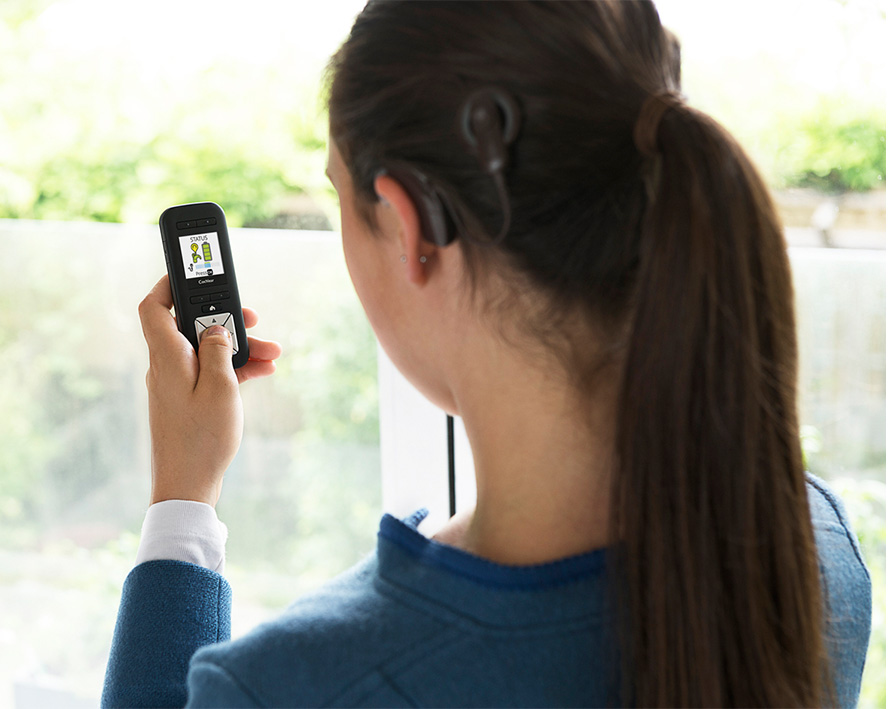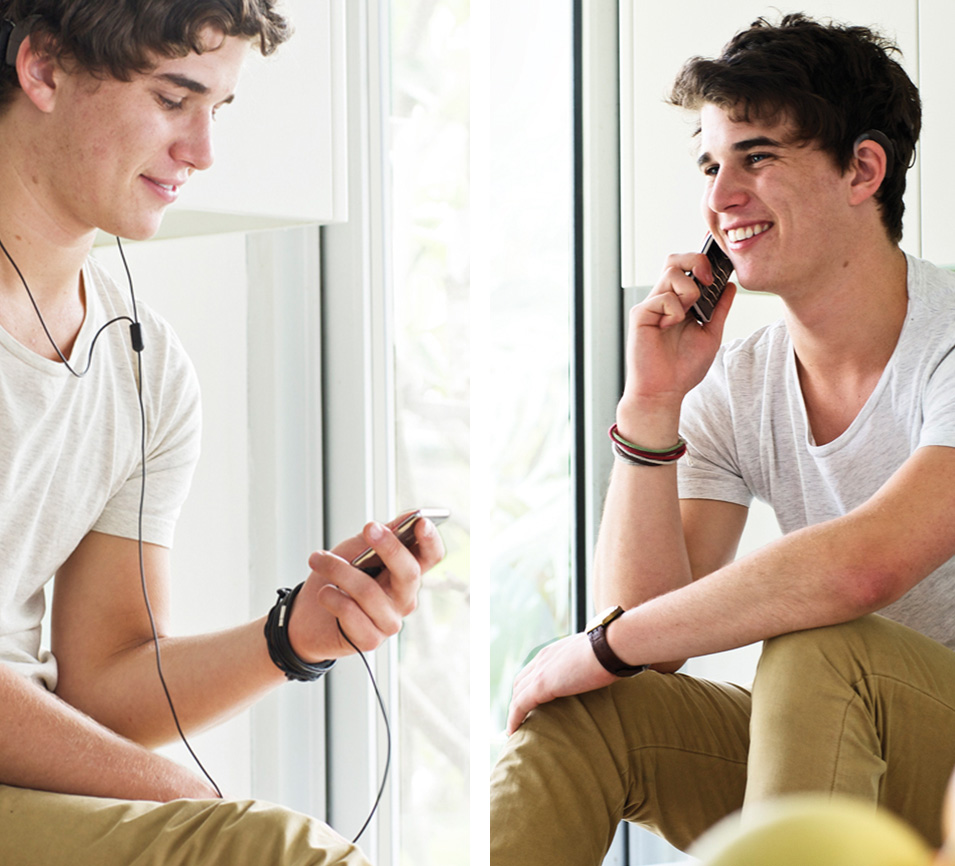General Information
What is a cochlea implant?
A cochlea implant is an inner ear hearing prosthesis, which makes it possible for severely hard-of-hearing or deaf patients to hear again. The basic principle of this highly specialized, medical device is based on the electrical stimulation of the hearing nerves through an electrode implanted in the cochlear. Contrary to hearing aids, cochlea implants do not cochlea
implants do not result in acoustic amplification. Thus proving to be particularly helpful for patients with progressed hearing loss, who can’t achieve sufficient amplification with hearing aids. Normally with a cochlea implant, one can understand speech again without lip-reading, listen to music and usually telephone again.
How is a cochlea implant constructed?
The cochlea implant consists of two parts: The actual implant is extremely flat and is implanted under the skin behind the ear during an operation under anesthesia. An electrode from the implant leads to the stimulation of the auditory nerve in the inner ear. The implant and the electrode are not visible from the outside, as they are under the skin. The speech processor is worn, similar to a hearing aid, behind the ear.
Unlike a hearing aid, the auditory canal is not blocked by an earmold - annoying inflammations of the ear canal can thus be avoided. A microphone picks up the sound, which is processed by a processor. With the help of a transmission coil, the control signal for the electrode is transmitted to the implant under the skin and the auditory nerve is stimulated. Thereby making it possible to return to the world of the hearing.


Can my remaining residual hearing still be preserved with a cochlea implant?
Hearing preserving surgical techniques are a primary focus of our cochlea implant program. Although the exclusive use of hearing aids often doesn’t provide a satisfying hearing situation, many patients want to retain their residual hearing. This is particularly useful when a minimal level of speech
comprehension is present with the hearing aid. By combining a hearing aid (for the deep tones) with a cochlea implant (for the middle and high tones) the existing residual hearing can be optimally utilized (electroacoustic stimulation - EAS).
How long have cochlea implants been available?
The cochlea implant, in its basic form, has been around for more than 25 years. This surgery has been
carried out in our center on children and adults with extensive experience and huge success.
Which kind of hearing loss or deafness can be treated with cochlea implants?
The cochlea implant is used for severe inner ear hearing loss. Even patients who are completely deaf can successfully use cochlea implants. A rule of thumb here: anyone who can no longer
easily telephone with hearing aids, can usually achieve better speech comprehension with a cochlea implant.
Can children hear with a cochlea implant?
Children who are born severely hard of hearing and/or deaf, or who suffered severe hearing impairment at a very early age, can learn to hear and speak with a cochlea implant. Cochlea implant surgery represents the so-called “gold standard”
of therapy and rehabilitation of severely hard-of-hearing children. As a rule this surgery and the subsequent rehabilitation make very good hearing and speech possible. Early treatment of affected children is optimal within the first year of life.
Can adults as well as older people hear with a cochlea implant?
There is no age restriction for the use of cochlea implants. Children can already be treated in the first year of life. If the medical conditions are fulfilled, older adults benefit from surgery just as much
as younger patients. Apart from the medical aspects, patients should bring a high degree of self-motivation to hear and understand speech again.


In the case of young children, how is it determined if they need a cochlea implant?
In the case of young children, an objective hearing examination (BERA) is carried out under anesthesia. We are one of the few institutions that can also carry out the necessary imaging (CT and MRT of the head)
for the surgery during the same test. This not only enables us to establish a diagnosis quickly, but also spares the child from further anesthesia.
What is the procedure for receiving a cochlea implant?
Normally the patient is admitted as an inpatient one day before the surgery in order to answer any final questions and to inform the patient about the surgery in detail. The surgery is carried out
on the following day and the patient is released following a healing phase of a few days. During the healing phase, adjustments to the speech processor are made.
Is the surgery risky?
In one of the centers accredited to carry out this surgery, the risk of
cochlea surgery is the same as conventional ear surgery.
Is the implant always placed in only one ear?
In the case of severe hearing loss and/or deafness in both ears, bilateral implants in one surgery or in two separate surgeries can be considered. This is particularly beneficial for directional hearing. In the case of young children, bilateral implants
are often carried out in one procedure, when it is medically feasible. In the case of varying levels of hearing loss in the left and in the right ear, only one ear can be implanted initially and, if necessary, the other ear is implanted later.


Which different types of implants and implant manufacturers are available?
Who determines which implant I get?
If there are no medical or technical grounds that call for a special implant, our ENT-CI specialist and the customer select the device together.
This is accompanied by detailed consultation and demonstrations of the various implant types and their respective characteristics.
Who helps me to train my hearing with the implant?
After the initial fitting of the speech processor, rehabilitation is carried out with one of our cooperation partners:
- children - inpatient or outpatient service
- adults - outpatient service




